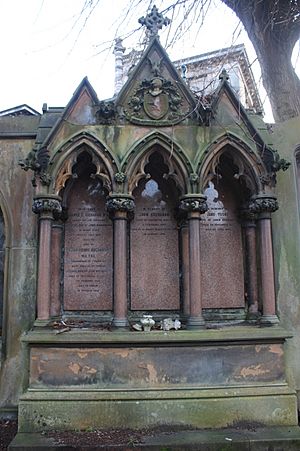John Young Buchanan facts for kids
John Young Buchanan (born February 20, 1844 – died October 16, 1925) was a Scottish scientist. He was a chemist and also studied the ocean. He explored the Arctic too. Buchanan was a very important part of the famous Challenger Expedition. This journey explored the world's oceans.
About His Life

John Young Buchanan was born in Partickhill, Glasgow, Scotland. This was on February 20, 1844. His parents were Jane Young and John Buchanan. His father was a rich landowner. John had a brother named Thomas Ryburn Buchanan. Thomas became a well-known politician.
John went to Glasgow High School. After that, he studied chemistry at the University of Glasgow. He also traveled around Europe. He studied at universities in Marburg, Leipzig, Bonn, and Paris. He finished his studies in 1863.
His first job was helping Professor Alexander Crum Brown. This was at the University of Edinburgh.
In 1870, he became a member of the Royal Society of Edinburgh. This is a group for important scientists. He lived at 10 Moray Place in Edinburgh. The Society gave him the Keith Prize for his work between 1885 and 1887.
In 1873, he joined the Challenger Expedition. This was a three-year trip. He worked as a chemist and physicist on the ship. The expedition studied the world's oceans.
Buchanan had new ideas about ocean currents. These ideas were different from what people like Humboldt believed.
In 1887, he became a member of the Royal Society. This is another very important scientific group. He was still living at 10 Moray Place in Edinburgh.
From 1889 to 1903, he taught geography. This was at the University of Cambridge.
He passed away in London on October 16, 1925. He was 81 years old. His body was brought back to Edinburgh. He is buried with his parents in Dean Cemetery.
Places Named After Him
- Buchananhalvøya is a peninsula in Spitzbergen. It is named after Buchanan.
- The glacier Buchananisen in Svalbard is also named after Buchanan.


